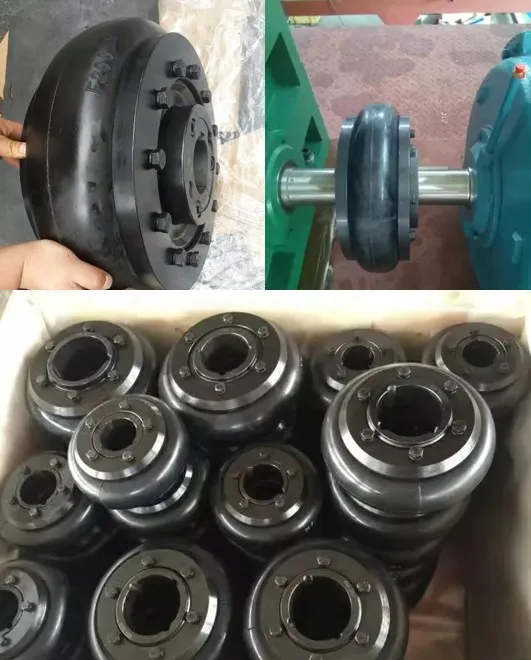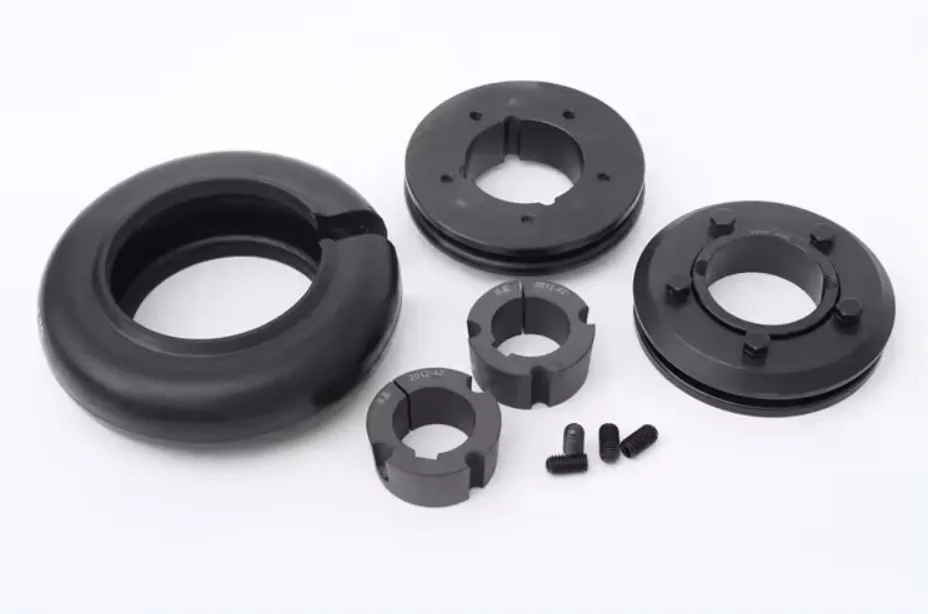Rubber Coupling for Public Transportation Systems
Introduction
Rubber coupling plays a crucial role in ensuring the smooth operation and efficient functioning of public transportation systems. As a vital component, rubber couplings are designed to transmit torque between two shafts while accommodating misalignments and dampening vibrations. This article aims to explore the various aspects of rubber couplings in the context of public transportation systems, shedding light on their benefits, applications, and installation procedures.

Benefits of Rubber Coupling in Public Transportation Systems
1. Superior Misalignment Compensation
Rubber couplings excel in compensating for misalignments between shafts, allowing for smooth power transmission even in demanding operating conditions. The flexing capability of the rubber material enables the coupling to absorb misalignments caused by factors such as vibrations, temperature variations, and structural deformations.
2. Vibration Damping
Public transportation systems often encounter substantial vibrations due to uneven road surfaces, varying loads, and mechanical impacts. Rubber couplings mitigate these vibrations by absorbing and dissipating the energy, resulting in improved passenger comfort, reduced wear and tear on equipment, and extended service life.
3. Noise Reduction
The rubber material used in couplings acts as an effective noise insulator, dampening the transmission of noise and vibrations generated by the transportation system. This feature significantly contributes to a quieter and more pleasant environment for both passengers and operators.
4. High Torque Transmission
Rubber couplings are capable of transmitting high levels of torque while maintaining flexibility and resilience. This ensures efficient power transfer between shafts, even during heavy load conditions, ultimately enhancing the overall performance and reliability of the transportation system.
5. Easy Maintenance
With their simple and robust design, rubber couplings require minimal maintenance. The absence of complex components reduces the likelihood of failure or breakdown, saving time and costs associated with repairs. Regular inspections and lubrication are typically sufficient to keep the couplings in optimal working condition.

Installation of Rubber Coupling
Proper installation of rubber couplings is crucial for ensuring their optimal performance and longevity. Here are the recommended steps to follow:
1. Shaft Preparation
Thoroughly clean and inspect the shafts to ensure they are free from dirt, rust, and other contaminants. Any surface irregularities should be corrected, and the shaft ends should be deburred.
2. Coupling Alignment
Align the coupling halves carefully to ensure accurate shaft alignment. This step is essential for minimizing stress on the coupling and preventing premature wear or failure.
3. Lubrication
Apply an appropriate lubricant to the coupling’s flexible element and mating surfaces. This will facilitate smooth engagement and disengagement, reducing friction and wear.
4. Coupling Assembly
Join the coupling halves, ensuring that they are properly aligned and securely fastened. Follow the manufacturer’s guidelines regarding torque specifications for fasteners to prevent over or under tightening.
5. Inspection and Testing
After installation, inspect the coupling for any signs of misalignment, unusual vibrations, or noise during operation. Conduct thorough testing to verify the coupling’s performance and rectify any issues promptly.

Choosing and Customizing Rubber Coupling
When selecting or customizing a rubber coupling for specific applications, several parameters and real-world conditions need to be considered. The following factors play a crucial role in choosing the most suitable rubber coupling:
1. Torque Requirements
Analyze the torque demands of the transportation system to determine the appropriate coupling size and torque rating. Consider both peak and average torque values to ensure reliable performance under varying operating conditions.
2. Misalignment Tolerance
Evaluate the expected misalignments between the shafts and choose a rubber coupling that can accommodate these misalignments without compromising performance. Factors such as axial, angular, and parallel misalignments should be considered.
3. Environmental Considerations
Assess the environmental conditions in which the coupling will operate, including temperature extremes, humidity, exposure to chemicals, and potential contaminants. Select a rubber material that exhibits excellent resistance and durability in these conditions.
4. Dynamic Characteristics
Understand the dynamic behavior of the transportation system, including its natural frequencies, resonance points, and vibration profiles. Opt for a rubber coupling that can effectively dampen vibrations and prevent resonance issues.
5. Installation Space and Constraints
Consider the available space for coupling installation, including shaft spacing and clearance limitations. Ensure that the selected coupling design can be easily accommodated within these constraints without compromising its functionality.

About HZPT
HZPT is a modern enterprise located in Hangzhou, Zhejiang Province, specializing in the research, development, production, and international trade of coupling products. Committed to integrity and guided by core values, HZPT focuses on technological innovation and industrial investment. With a strong presence in Asia, Europe, Africa, and North America, HZPT aspires to become a globally influential international group.
Our company specializes in the production and sale of various types of rubber couplings, including drum-shaped couplings, pin-bushing couplings, serpentine spring couplings, universal couplings, star-shaped couplings, expansion couplings, diaphragm couplings, and tire couplings. We boast a comprehensive and scientific quality management system and have our own technology development and testing departments. Our certifications include CQC, ISO, and CE, ensuring the highest quality standards for our customers. We are dedicated to providing excellent sales service and technical support to over a hundred cooperative enterprises, prioritizing customer satisfaction and mutual development.

